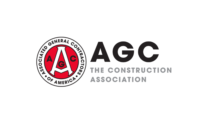The rising price of lumber strongly affects the residential construction market, where approximately 1.9 million single- and multi-family projects were built in North America in 2002. The National Association of Home Builders estimates that it takes 6,000 square feet of structural paneling and 16,000 board-feet of framing lumber, such as 2x4s and 2x6s, to build a typical 2,000-square-foot house. Random Lengths, a trade publication that tracks lumber prices, reports that the price of framing a house with lumber has soared from $6,048 to $9,322 in only one year, a 34-percent increase in the United States. The price increase in Canada is even more severe where the price of lumber needed to build a 2,000-square-foot house now costs $13,900 (Canadian dollars), a 56-percent increase since May 2003.
Although the cost of lumber is only a small portion of the overall expense of a house, the extra costs have been be passed along to the homeowner in the form of the final listing price.
"Higher lumber costs have affected home prices, where the median list price of a new United States home has increased 2 percent since January, from $181,700 to 190,100," said Mark Justman, vice president, market promotion and research for the Portland Cement Association. "As wood becomes more expensive, concrete becomes more and more attractive to builders."



